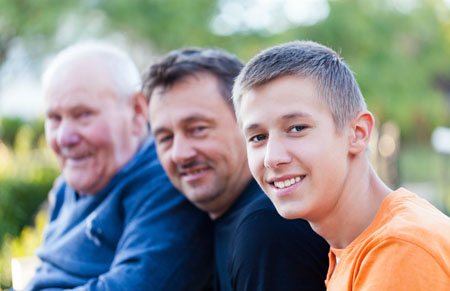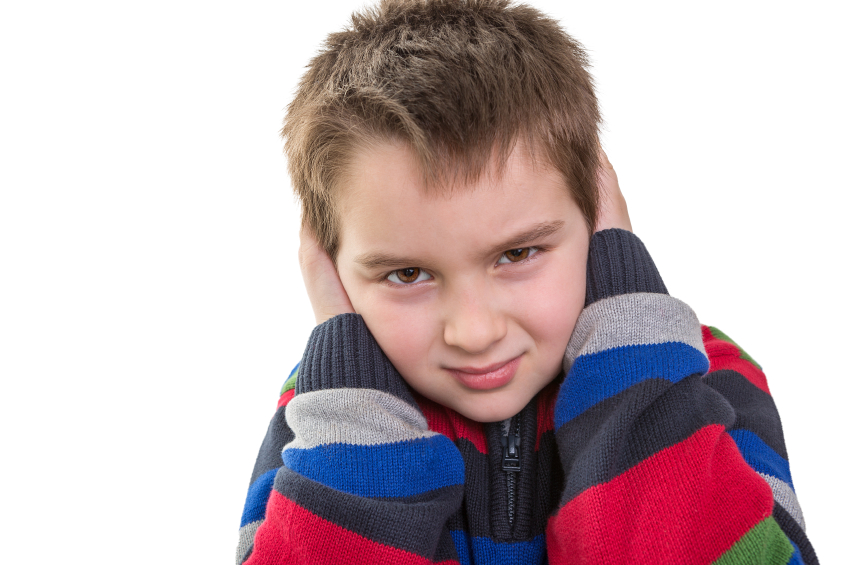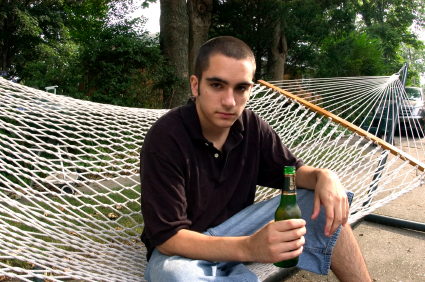ADHD Common in People with Mood Disorders

In a meta-analysis published in the journal Acta Psychiatrica Scandinavica in 2021, researcher Andrea Sandstrom and colleagues reported that people with mood disorders had a three times higher incidence of attention-deficit hyperactivity disorder (ADHD) than people without mood disorders. ADHD was also more likely to occur in people with bipolar disorder than in people with major depression. The comorbidity is most common in childhood, less so in adolescence, and lowest in adulthood.
Based on 92 studies including a total of 17,089 individuals, the prevalence of ADHD in people with bipolar disorder is 73% in childhood, 43% in adolescence, and 17% in adulthood. Data from 52 studies with 16,897 individuals indicated that prevalence of ADHD in major depressive disorder is 28% in childhood, 17% in adolescence, and 7% in adulthood.
Editor’s Note: A key implication of this research is that there is a huge overlap of bipolar disorder and ADHD in childhood, and that physicians need to specifically look for bipolar symptoms that are not common in ADHD to make a correct diagnosis. These include: brief or extended periods of mood elevation and decreased need for sleep in the youngest children; suicidal or homicidal thoughts and threats in slightly older children; hyper-sexual interests and actions; and hallucinations and delusions. When these are present, even when there are also clear-cut ADHD symptoms, a clinician must consider a diagnosis of bipolar disorder and treat the child with mood stabilizers prior to using stimulants or other traditional ADHD medications.
Conversely, physicians should be aware of the much lower incidence of ADHD in adolescents and adults with bipolar disorder. Here one should first make sure that the apparent ADHD symptoms of hyperactivity, inattention, poor concentration, etc. do not result from inadequately treated mania and depression, and if they do, treat these symptoms to remission prior to using traditional ADHD medications.
Study Examines Comorbidity of ADHD and Bipolar Disorder

In a 2021 review and meta-analysis in the journal Neuroscience and Biobehavioral Reviews, researcher Carmen Schiweck and colleagues described the comorbidity of attention-deficit hyperactivity disorder (ADHD) and bipolar disorder in adults. This was the first review and meta-analysis to quantify the comorbidity of the two fairly prevalent disorders. The meta-analysis included 71 studies with a combined total of 646,766 participants from 18 countries.
The review found that among people with ADHD, about 1 in 13 also have bipolar disorder, while among people with bipolar disorder, 1 in 6 have comorbid ADHD. The prevalence differed depending on the continent where patients lived and the diagnostic systems used there, with greater prevalence of both disorders in the US, where the Diagnostic and Statistical Manual of Mental Disorders is used, than in Europe, where the International Classification of Diseases is typically used. (Other parts of the world were less represented in the meta-analysis.) Schiweck and colleagues found that bipolar disorder had an onset about 4 years earlier in patients who had comorbid ADHD.
Characteristics of Youth with Bipolar Spectrum Disorders

In a 2020 article in the Journal of Child and Adolescent Psychopharmacology, researcher Gonzalo Salazar de Pablo and colleagues described characteristics of youth with three different bipolar spectrum disorders: bipolar I disorder, bipolar disorder not otherwise specified (NOS) and mood disorder (MD) not otherwise specified. The participants were hospitalized adolescents aged 12–18 years, who were highly impaired with hallucinations, delusions, incoherence, or inability to function.
Mania (especially irritability) and depressive symptoms were common in all three groups.
Many of the youths had comorbid conditions. Approximately 40% of each diagnosis group had an anxiety disorder. Attention deficit hyperactivity disorder (ADHD) was seen in 29.2% of those with bipolar I disorder, 34.5% of those with bipolar NOS, and 43.5% of those with mood disorder NOS. Oppositional defiant disorder was seen in just over 20% of those with bipolar I or bipolar NOS, and just over 30% of those with mood disorder NOS. Substance use disorders were seen in 8.3% of those with bipolar I and about 21% of those with bipolar NOS or mood disorder NOS. Many of the participants had moderate to severe suicidality.
The median delay before the adolescents received treatment for their moderate to severe symptoms was 21 to 25 weeks. After discharge from the hospital, the adolescents with bipolar I, bipolar NOS, and mood disorder NOS were typically treated with atypical antipsychotics (79.2%, 62.1%, and 56.5%, respectively), mood stabilizers (66.7%, 31.0%, and 34.8%), and lithium (58.3%, 20.7%, 30.4%), with greater use of mood stabilizers and lithium than on admission and less use of antidepressants. Few children were on ADHD medications on admission, and even fewer (4-9%) on discharge.
The authors conclude: “Youth with BD-I, BD-NOS, and MD-NOS experience considerable symptomatology and are functionally impaired, with few differences observed in psychiatric comorbidity and clinical severity. Moreover, youth with BD-NOS and MD-NOS undergo a [long] period with subthreshold manic symptoms, enabling identification and, possibly, preventive intervention of those at risk for developing [bipolar disorder] or other affective episodes requiring hospitalization.”
Editor’s Note: These findings replicate many others in the field indicating that children with bipolar spectrum disorders, even those with symptoms short of a full-blown bipolar I diagnosis, are highly impaired with multiple comorbidities and high levels of suicidality and other dangerous symptoms. These patients deserve systematic pharmacological intervention based on an extensive clinical treatment literature.
The only thing the authors failed to address is that not only does no such clinical treatment literature exist, but there does not seem to be any recognition by the National Institute of Mental Health and other funding bodies that a series of treatment-oriented studies in children and adolescents is urgently needed.
The 2010 epidemiological studies of Kathleen Merikangas and colleagues indicate that 2.2% of adolescents have a bipolar spectrum diagnosis and that 80% of those young people are not in any kind of treatment. This is in part driven by a lack of consensus about appropriate treatment. The magnitude and seriousness of this illness creating lifelong problems, disability, cognitive impairment, and the loss of more than a decade of life expectancy is a public health catastrophe.
In the 1980s, AIDS protesters had to raise awareness, protest, and clamor for treatment studies in a highly confrontational manner before AIDS research was appropriate funded. Anthony Fauci, Director of the National Institute of Allergy and Infectious Disease since 1984, has said he was finally convinced that the AIDS protestors were correct, and he then joined forces with them to foster and accelerate treatment studies. The prognosis for AIDS changed from certain death in the 1980s to a manageable illness today.
We need leaders to demand attention to the lack of studies in bipolar disorder at a threshold that cannot be ignored by leaders of the NIMH. Patient advocacy groups must push the NIMH to fund treatment studies for bipolar disorder. It is clear that without some new form of pressure, the NIMH will fail in its stated mission to help make the lives of those with serious mental illness less grave. The current generation and many in the future generations of patients with bipolar disorder will otherwise face disaster.
Comorbid Psychiatric Disorders Impair Response to Psychosocial Treatment in Adolescents with Bipolar Disorder
At the 2019 meeting of the International Society for Bipolar Disorders, researcher Marc J. Weintraub and colleagues followed 145 adolescents with bipolar disorder over a period of two years. The adolescents with comorbid disorders (compared to those with bipolar disorder alone) fared more poorly in response to psychosocial treatment.
Weintraub and colleagues found that the adolescents who had anxiety disorders in addition to their bipolar disorder spent more weeks depressed, had more severe symptoms of (hypo)mania, and had more family conflict over the course of the study than those adolescents who had bipolar disorder alone.
Participants who had attention deficit hyperactivity disorder (ADHD) in addition to their bipolar disorder had more weeks with (hypo)manic symptoms, had more severe (hypo)manic symptoms, and greater family conflict than those with bipolar disorder alone.
Those participants with comorbid oppositional defiant disorder (ODD) or conflict disorder in addition to their bipolar disorder had more depressive symptoms and family conflict throughout the study.
Editor’s Note: How to better approach treatment in these diagnostically complex young people is an urgent unmet need, as most research excludes participants with more than one psychiatric disorder. Clinicians treating young people with bipolar disorder and comorbidities such as anxiety disorder, ADHD, and ODD must generally rely on inferences from children with these illnesses, using their own intuition about best treatment approaches rather than having evidence from systematic studies about how best to treat these children. It appears that both psychosocial and pharmacological treatments must be tailored to these more complicated presentations.
High Risk of Suicide Attempts in Bipolar Disorder with Substance Abuse
At the 2014 meeting of the International College of Neuropsychopharmacology, researcher Rieva et al. reported that 60% of bipolar patients with comorbid alcohol abuse have attempted suicide, and 48% of bipolar patients with cocaine abuse have attempted suicide. Thus, both of these comorbidities deserve specific attention and treatment. Unfortunately there are currently no Federal Drug Administration–approved drugs for bipolar patients with these comorbidities. The most promising treatments, based on data in patients with primary addictions, are the nutritional supplement N-acetylcysteine and topiramate, which have both performed better than placebo in studies of alcohol and cocaine abuse disorders.
Childhood Onset of Bipolar Illness More Difficult than Adolescent and Adult Onset
Research on early-onset bipolar disorder sometimes lumps childhood-onset in with adolescent onset. Researcher Terence Ketter et al. explored differences in illness among 502 patients at the Stanford Bipolar Disorder Clinic. The 107 patients with childhood onsets (before age 13) had a more difficult course of illness in almost all domains compared to the 238 patients with adolescent onsets (age 13–18) or the 157 patients with illness onset in adulthood (after age 18).
Considered separately, both patients with childhood-onset illness and patients with adolescent-onset illness had more comorbid anxiety disorders, alcohol use disorders, eating disorders, prior suicide attempts, rapid cycling in the prior year, and at least five mood episodes over the course of their lifetimes than those patients whose illness began in adulthood. Patients whose illness began in childhood had higher rates of each of these unfavorable illness characteristics and were more likely to have a first-degree relative with a mood disorder.
These data mirror those from the Bipolar Collaborative Network in which this editor (Robert Post) is an investigator, and the larger STEP-BD network led by Perlis et al. All three suggest that in the US, two-thirds of the bipolar disorder seen in adults begins in childhood and adolescence, with about a quarter beginning before age 13.
Ketter suggests that research should not combine childhood and adolescent onset illnesses, which come with different rates of anxiety, alcohol, and eating disorder comorbidity, rapid cycling, and prior episodes. The statistical relevance of some findings can be diluted when the two groups are combined.
Editor’s Note: However, the primary message is that childhood onset bipolar disorder is a more severe version of the illness that deserves greater attention, treatment, and research so that its course can be made more benign. It is a problem that there are no Federal Drug Administration–approved treatments for children under 10 years of age with bipolar disorder.
Topiramate Added to Regular Treatment Helps OCD symptoms in Bipolar Disorder
Until now, there has been little research about treating obsessive compulsive symptoms in people with bipolar disorder.
In a recent four-month double-blind placebo-controlled randomized clinical trial presented by Sharaian et al. at the 2014 meeting of the International Society for Bipolar Disorders, topiramate was more effective than placebo at reducing these symptoms in patients with bipolar disorder when added to their regular treatment. Nine of 17 study participants responded to topiramate (53%), while only two of 16 responded to placebo (12.5%).
Editor’s Note: These findings add to the list of comorbidities that topiramate may help with, even though it does not have any efficacy in the treatment of mania itself. Topiramate has helped with avoidance of cocaine and alcohol, bulimia and weight gain, anger attacks, and now obsessive compulsive disorder (OCD). Topiramate is also FDA-approved for migraine prevention in adolescents and adults.
Worsening Comorbidities Relate To Adverse Bipolar Outcomes
 Many children with bipolar disorder also present with other comorbid Axis I psychiatric illnesses. Now it seems that the worsening of these comorbidities, such as attention-deficit hyperactivity disorder (ADHD) or an anxiety disorder, can signal a more difficult course of bipolar illness itself. At a symposium on the course of bipolar disorder in children at the 2013 meeting of the American Academy of Child and Adolescent Psychiatry (AACAP), Shirley Yen from Brown University discussed findings on comorbidities of childhood onset bipolar disorder from COBY, the Collaborative Child Bipolar Network. Upon study entry, 60% of children with bipolar disorder also had ADHD, 40% had oppositional defiant disorder (ODD), 39% had an anxiety disorder, 12.5% had both oppositional defiant disorder and a conduct disorder, and 9% had a substance abuse disorder.
Many children with bipolar disorder also present with other comorbid Axis I psychiatric illnesses. Now it seems that the worsening of these comorbidities, such as attention-deficit hyperactivity disorder (ADHD) or an anxiety disorder, can signal a more difficult course of bipolar illness itself. At a symposium on the course of bipolar disorder in children at the 2013 meeting of the American Academy of Child and Adolescent Psychiatry (AACAP), Shirley Yen from Brown University discussed findings on comorbidities of childhood onset bipolar disorder from COBY, the Collaborative Child Bipolar Network. Upon study entry, 60% of children with bipolar disorder also had ADHD, 40% had oppositional defiant disorder (ODD), 39% had an anxiety disorder, 12.5% had both oppositional defiant disorder and a conduct disorder, and 9% had a substance abuse disorder.
The prevalence of most of these comorbid illnesses increased over time (e.g. anxiety disorder rates increased from 39% to 62%). The illnesses were also related to the time it took participants to achieve recovery (eight consecutive weeks well), and the time until a recurrence of a depressive or manic episode.
Increases in anxiety were linked to longer time to achieve recovery and a shorter time to a recurrence. Increases in ADHD were linked to a more rapid onset of a depressive recurrence. Increases in oppositional defiant disorder and conduct disorder had no relationship with either remission or recurrence. Increases in substance abuse disorders were linked to a longer time to recover from a manic episode. Thus, worsening of the comorbid conditions had definite consequences for both recovery and recurrence.
Bipolar Disorder and Its Comorbidities in Youth
A symposium on bipolar disorder and its comorbidities in children and adolescents was held at the annual meeting of the American Academy of Child and Adolescent Psychiatry in 2011. The following findings were reported there.
ADHD
Researcher Janet Wozniak discussed the relationship of bipolar illness and attention deficit hyperactivity disorder (ADHD). Based on interviews of family members of children with bipolar illness alone, bipolar illness plus ADHD, ADHD alone, and controls, she concluded that bipolar illness occurred more often in families of children with bipolar illness with or without ADHD. Similarly, she showed that there was more ADHD in relatives of children with either ADHD alone or ADHD comorbid with bipolar illness. She concluded that the comorbidity of bipolar illness and ADHD is a unique subtype of bipolar disorder and requires further study.
Emotional Dysregulation and Substance Abuse
In another presentation, Tim Wilens indicated that those with bipolar disorder and emotional dysregulation had an 8- to 20-fold increased risk of having a substance abuse comorbidity with their bipolar disorder.
Substance Abuse Comorbidity
In a third presentation, Ben Goldstein reported that the onset of bipolar illness predates the onset of substance abuse in 60 to 83% of instances of comorbid illness. He emphasized the dramatic negative impact of comorbid substance use in children with bipolar disorder in terms of increasing legal entanglements, pregnancy, academic failure, suicide, and decreased compliance with medications. He reported that in the multi-site, National Institute of Mental Health (NIMH)-funded Course and Outcome of Bipolar Illness in Youth (COBY) study, the largest longitudinal study to date of youth with bipolar disorder, the risk of new onset substance abuse over the course of 4 years of follow-up was 32%. These data taken with the 15% of children who already had substance abuse at intake indicates that in this study approximately half of the children with bipolar illness had or acquired a substance abuse problem near the beginning of their illness. Two-thirds of the children in the study had abused both alcohol and cannabis. Read more
Treatment Plans for Maladaptive Impulsive Aggression in Children
Maladaptive impulsive aggression often co-occurs with other psychiatric illnesses in children, so it can be difficult to find treatment solutions. A symposium at the 57th Annual Meeting of the American Academy of Child and Adolescent Psychiatry yielded some suggestions. Read on for an overview of impulsive aggression and possible treatment plans.
At the symposium, held in New York Oct. 26-31, 2010, panelists called maladaptive aggression the “fever” of child psychiatry (because it is common but also nonspecific) and described the phenomenon as “the language of the inarticulate.” The panelists drew a distinction between impulsive aggression, which describes behavior that is unplanned, unprofitable, and poorly controlled, and another phenomenon, predatory aggression, which describes behavior that is planned, sometimes profitable, and highly controlled.
The speakers on the panel indicated that impulsive aggression is related to other psychiatric syndromes including depression, attention deficit hyperactivity disorder (ADHD), mania, conduct disorder, oppositional defiant disorder, anxiety, post-traumatic stress disorder (PTSD), borderline personality disorder, autism, and schizophrenia. This raises problems for drug development, as Tom Laughren of the Federal Drug Administration (FDA) indicated in one talk at the symposium, because when new treatments are developed, they are studied in the context of only one primary disorder. Read more






